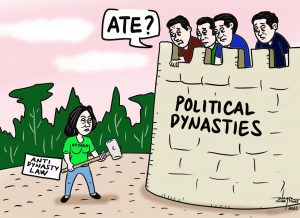Last week, I was asked to explain or at least approximate the differences among peoples across generations. So, we talked and tried to animate ourselves with various ages. It is good to discuss the generations, their imposing characteristics because each has roles in nation-building.
There is the Lost Generation born in the years 1883 to 1900, and given their ages, people of this generation are all frail, and many are already gone. The best moment in Philippine history occurred this time when the great Filipinos at the prime of their age, dedicated limbs, and lives to start the cry for freedom, making the idea of independence inevitable. The lost generation hosted Dr. Jose Rizal and his Noli Me Tangere which stirred the Indio’s consciousness of self; Andres Bonifacio with his famous cry in Balintawak, the establishment of the First Republic, of the Republic of Negros, and the patriotic defiance of the Moros against the Spaniards.
The Greatest Generation comprises the brave veterans who fought the Second World War. They are a witness to the war machines of fighter planes, tanks that destroyed lives and abodes at length beyond imagination. Peoples of this generation, born from 1901 to 1927, have to be tough to survive.
Strongly associated with the Greatest Generation is the Silent Generation or those who fought a portion of the Second World War towards its end, the Korean and the Vietnam wars. They were born from 1925 to 1942.
The Baby Boomers, also known as the Generation W, are those who were born after the war. The baby boomers are those who were born from 1946 to 1964 and are noted for their strong work ethic, independence, and self-assurance, resourceful, goal-oriented, and discipline. No wonder, most of our leaders in the national government are making tides of change so impressively, beginning with our President.
Then we have the Generation X born from the mid-60s to early years of the ’80s known for their values and work-life balance, tolerance to change and can adapt to lifestyles of the boomers and the millennials.
However, people of this generation value their independence, resourcefulness, and self-reliance. They can be with others, but they can live alone happily watching MTV; that is why Generation X is also known as the MTV generation.
Then came the Generation Y or the millennials who were born from the 1980s to early 2000s. The overlap of the baby boomers and the millennials resulted in a sub-generation that can readily slide to the previous and assimilate also with the succeeding generation.
The millennials compose a significant share of the human resources today, and are known to be highly socially-oriented, technology is already part of their DNA, they express unique needs and different expectations, and they fret over one brand to another but maintain high-brand awareness. They also create their language in their various sub-cultures and enjoy absurdity and peculiar humor. They can readily read through text and information which contributes to their digital creations. However, they get bored too quickly.
Now, what is my bottomline? The various generations maintain unique positions in creating our history. At the moment, the baby boomers are taking a good lead in the country because of their experiences and goal-orientation, not to mention their work ethic. They are and should be supported by Generation X whose independence and resourcefulness need be contributed to increasing the arsenal of change towards a better future. Finally, the millennials are a force to depend on for their creativity and digital culture. But, the pitfall is, they quickly succumbed to boredom. But the search for a better future is not a domain of weariness nor of instance, it is persistence and focused.
Age after all has a function — foresight and energy.



